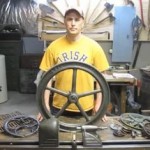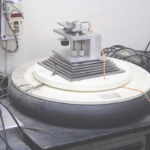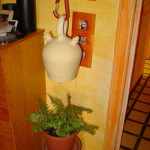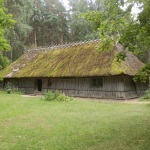Medieval Lives is a BBC documentary series looking at the Medieval world with the intent of finding out what it was really like. The series consists of eight episodes, each of which examines a particular Medieval personality: the peasant, the monk, the damsel, the minstrel, the knight, the philosopher, the outlaw and the king. Via Ran Prieur.
Oil Dependency & Alternative Fuels in 1909
“The fuel chiefly employed for motors (to the abundant supply of which the rapid rise of the automobile industry may be said to be largely due) is petrol. The motor industry, which is fast becoming one of the world’s greatest industries, is thus dependent upon the supply of a fuel which to all appearance must, according to the present trend of progress, fail in the near future to be equal to the demand. The Motor Union of Great Britain and Ireland became somewhat alarmed at the serious rise in the price of petrol, and in September 1906 it was suggested that a special Committee should be appointed to fully discuss this important subject.”
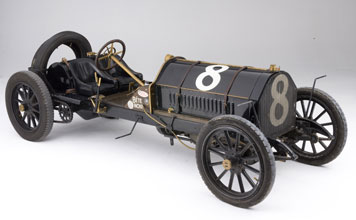 “In July 1907 the official report of the Committee was issued, and through the courtesy of the secretary of the Motor Union the following extracts are taken: The Committee have carefully considered the various substitutes for petrol which have been brought before them, and have unanimously arrived at the conclusion that the main efforts of the Motor Union should be in the direction of encouraging in every way the use and development of a substance, such as alcohol, produced from vegetation.”
“In July 1907 the official report of the Committee was issued, and through the courtesy of the secretary of the Motor Union the following extracts are taken: The Committee have carefully considered the various substitutes for petrol which have been brought before them, and have unanimously arrived at the conclusion that the main efforts of the Motor Union should be in the direction of encouraging in every way the use and development of a substance, such as alcohol, produced from vegetation.”
“Alcohol offers a complete and satisfactory substitute for petrol so far as its properties are concerned, and hence probably the most important recommendation of the Committee is that connected with the production on a large scale of alcohol for the purposes of a fuel. It may be noted that the argument added to all others, but which to many in this country would probably appear the most important of all, is the fact that it would form a home industry, especially if produced from some substance, such as peat, potatoes, or beet, which would place the country in an independent position with regard to foreign supplies, a consideration which, it should be noted, is leading the Governments of France and Germany, particularly the latter, to give every encouragement to the use of alcohol as a fuel.”
Quoted from “Commercial peat: its uses and possibilities“, Frederick T. Gissing, 1909. Picture: the 1909 Alco Six Race Car.
Early 20th Century Wave Power
“Los Angeles will be a smokeless and sootless city, clean pure. It will be made so by all the power and heating plants being supplied with power and heat from the ocean waves by the Starr Wave Motor.”
Read more: three inventors who tried to bottle the ocean’s power. Hat tip to Klaas Van Gorp.
Medieval England twice as well off as today’s poorest nations
Research led by economists at the University of Warwick reveals that medieval England was not only far more prosperous than previously believed, it also actually boasted an average income that would be more than double the average per capita income of the world’s poorest nations today.
Summary & full paper (pdf): “British Economic Growth 1270-1870”, Stephen Broadberry & others, University of Warwick. Previously: they did not work that hard in those days, either.
The Blackfoot Indians
More than 1,400 Walter McClintock glass lantern slides at the Yale Collection of Western Americana, Beinecke Rare Book and Manuscript Library.
“Pittsburgh native Walter McClintock graduated from Yale in 1891. In 1896 he traveled west as a photographer for a federal commission investigating national forests. McClintock became friends with the expedition’s Blackfoot Indian scout, William Jackson or Siksikakoan. When the commission completed its field work, Jackson introduced McClintock to the Blackfoot community of northwestern Montana. Over the next twenty years, supported by the Blackfoot elder Mad Wolf, McClintock made several thousand photographs of the Blackfoot, their homelands, their material culture, and their ceremonies. Like his contemporary, the photographer Edward Curtis, McClintock believed that Indian communities were undergoing swift, dramatic transformations that might obliterate their traditional culture. He sought to create a record of a life-way that might disappear. He wrote books, mounted photographic exhibitions, and delivered numerous public lectures about the Blackfoot.”
Below some pictures of their homes.
Horse-Drawn Public Transportation
“For a hundred years, from the early 1800s to the early 1900s, Europe and America had cities of at least a million people that ran on a massive, sophisticated network of carriages and streetcars. By 1880, according to historian John H. White, Jr., US cities had 415 horse-drawn railways running, with 18,000 cars on 3,000 miles of track, carrying 1.2 billion passengers a year. Most of these lines continued decades into the age of electricity and coal, simply because the horses worked better than any other option.” Read: Horse-drawn public tranportation. Thanks, Johan. Previously: Bring back the horses.
